Who were the biggest movie stars a century ago? Are they still famous or have they fallen into complete obscurity? Today, we’re going on a whirlwind tour of two movie magazine popularity contests. We’ll be discussing the biggest stars of 1917 with research, films and GIFs. Ready?
(By the way, I have covered the top stars of 1913, 1914, 1915 and 1916. Enjoy!)
This article is going use the rankings from two write-in popularity contests, The Popular Player Contest from Motion Picture Magazine and the Kings & Queens of the Screen Contest from Motion Picture Classic. These contests involved write-in coupons and allowed multiple votes. As such, they can hardly be considered a scientific study of film popularity. This project is just a fun thing for us to enjoy and to get a basic snapshot of who had name recognition a century ago. Also, Popular Player Contest ran through part of 1916 and wrapped in February of 1917 so it likely reflects the films released in late-1915 to the end of 1916. In fact, I used the 1916 rankings as the basis of my top film star list for that year.
First, the popularity-based rank of the Motion Picture Magazine contest:
1. Mary Pickford
Brilliant businesswoman, ruthless negotiator, America’s Sweetheart. Her late-1916 to early-1917 films are pretty weak sauce (cough, cough, Less Than Dust) thanks, at least in part, to her studio’s bizarre insistence that she play international roles and become the World’s Sweetheart. Norma Talmadge had to deal with the same thing and it went over about as well as could be expected. Pickford’s career caught fire once again after the release of The Poor Little Rich Girl in March of 1917. But then she also had A Romance of the Redwoods and The Little American that same year…
The fact that her fans could forgive the poor films is a testament to her enormous popularity but Pickford realized she would not stay on top without quality vehicles. She needed to take control and she did, becoming one of the founders of United Artists. Her career flourished through the 1920s and she made her last movie in 1933, though she did continue to make occasional cameo appearances.
2. Francis X. Bushman
Most silent movie fans probably know Bushman from his role as Massala in the 1925 Ben-Hur but that was a full decade after the prime of his popularity. Bushman specialized in passionate romance stuff, often paired with Beverly Bayne. The only Bushman/Bayne picture available to the public is Under Royal Patronage, a 1914 Ruritanian romance. Not much but at least we can see Bushman at the top of his popularity and romance game.
Bushman’s popularity would take a hit in 1918 when he married Bayne. It has been incorrectly reported that his fans objected to their idol being married but that’s not the whole story. It wasn’t his marriage to Bayne, it was his divorce from his first wife and the fact that he left behind five kids that left a bad taste in the mouths of his fans. In any case, Bushman made a few comebacks (notably in that certain film involving a chariot race) and remained active as a popular television guest star until his death in 1966.
3. Marguerite Clark
Marguerite Clark was set up as a rival to Mary Pickford. Certainly, the acted in similar films. However, Clark’s appeal is very different and she should not be written off as a copycat. While Pickford excelled at playing wild child roles, Clark’s appeal was gentler. Her Snow White is a dainty darling but she does not fall into the trap of cutsiness. She retired from the screen in 1921.
4. J. Warren Kerrigan

Kerrigan is harder to judge; no films from his prime have been released to the general public. (You may note the lack of GIFs, a very sad state of affairs.) I really hate to give a verdict without having seen the pictures that won the hearts of moviegoers but I will say that I was unimpressed with his work in The Covered Wagon and Captain Blood, both made after his return to movies in the 1920s. This is the last year in which Kerrigan would break the top ten in one of these polls and I detail his fall from grace later in the article.
5. Pearl White
Pearl White made a splash with The Perils of Pauline and she followed it up with The Exploits of Elaine and other popular serials. Alas, despite its reputation, Pauline is a rather poor picture and White is more of a damsel than one would have hoped. Elaine is supposed to be an improvement and it did indeed spawn sequels so take that as you will. White retired from films in 1924 and enjoyed her wealth in France, which seems like a rather sensible thing to do for a fashionable woman of thirty-five.
6. Theda Bara
Theda Bara is forever known as the movie vamp but so few films survive from her heyday that we can only guess at the quality of her performances. A Fool There Was was her first vamp picture and its pretty campy stuff but it’s the only way we can see Bara in her eeeeeevil mode.
Bara’s career didn’t survive the vamp backlash and she retired from pictures in 1926. Despite her wicked onscreen reputation, Bara was said to be a charming woman with a great sense of humor. (Leatrice Joy asked her for help in winning over John Gilbert and Bara rouged her ears. Yep, her ears.)
7. Anita Stewart
Now we’re heading into more obscure territory. Anita Stewart is all but forgotten and very few of her 1910s films have made it to home video. (The GIF is from Human Desire, I haven’t reviewed it yet but you can buy it here.) She was known as “America’s daintiest actress” which sometimes translated into “Papa, what is beer?” scenes. For example, in Human Desire, she naively asks another woman if she has ever seen a real baby. Oy. I hope her other stuff is better.
1917 was Stewart’s last year at Vitagraph, where she had worked her way up the ranks to become a star. She signed on with Louis B. Mayer to form her own production company but was slapped with a lawsuit from Vitagraph. The lawsuit was settled but Stewart was off the screen for most of 1918. She soon clashed with Mayer over content (Mayer wanted family films, Stewart wanted more mature stories) and she declined to renew her contract in 1922.
Stewart is sometimes listed as a victim of sound but if you look closely at her filmography, you will see that through the mid- to late-1920s, she bounced around from studio to studio and made films with second tier companies like Mascot and Tiffany, the dying Vitagraph and the not-yet-one-of-the-big-guys Columbia. Her career was already on the rocks, sound was just the final nail in its coffin.
8. Henry B. Walthall
Walthall had been in pictures since 1908 and he had a respectable career but his role in The Birth of a Nation made him a hot property. (He is the only member of the cast who seems to have enjoyed significant windfall in popularity contests.) Walthall left D.W. Griffith’s company and signed on with Essanay where he made assorted dramas, melodramas and adventure pictures. I wasn’t too impressed with the ones I managed to see. Walthall remained in demand as a supporting and character actor until his death in 1936.
Walthall tends to eat the scenery, as can be seen in Judith of Bethulia, but he shows more subtlety in Friends, in which he plays Mary Pickford’s one true love. (The GIF above comes from that film.)
9. Edward Earle

Edward Earle is probably most remembered today for his supporting roles in The Wind and Spite Marriage. This is yet another case of films from the early part of a career being pretty much unavailable to the general public. Earle supported Viola Dana in a stack of pictures released around the time this poll was being conducted and he was teamed with Agnes Ayres in a series of shorts from 1917 to 1919. (Ayes, if you will recall, played the object of Rudolph Valentino’s obsession in The Sheik.)
Earle’s ride at the top didn’t last long but he enjoyed a lengthy career in supporting roles and worked in poverty row and television into the 1960s.
10. Wallace Reid
Wallace Reid was becoming quite a force to reckon with over at Paramount. He was teamed multiple times with Geraldine Farrar (Carmen and Joan the Woman being the most famous fruits of their partnership), Cleo Ridgely (The Golden Chance) and, gulp, Mae Murray. The fact that he placed higher than either Murray or Farrar in this popularity contest is a testament to his rapid rise up the Hollywood ranks. Reid’s 1923 drug-related death has overshadowed his film reputation, which is a shame because he’s a real charmer on the screen.
Looks, Charisma, Acting
And now let’s look at the second contest. The Kings and Queens of the Screen divides the stars into three categories: Handsomeness/Beauty, Charm and Portrayal (acting ability).
The contest ran into 1918 and so we will just be looking at the first published rankings from 1917. I think they’re quite illuminating because they show why moviegoers liked certain stars. Once pure acting ability is brought in, it’s amazing to see which names crop up.
I’ll just be listing the top five from each category.
The Ladies
Who’s the loveliest lady in films? The top five most beauteous women, as voted on by the American public:
- Anita Stewart
- Pearl White
- Beverly Bayne
- Mary Pickford
- Marguerite Clark
This syncs up pretty well with the popularity poll. (You can see Bayne receiving Bushman’s kiss in his popularity contest entry.) The lower ranks include names like Theda Bara, Norma Talmadge, Mae Murray and Marie Doro.
Charm! Which leading lady has the most charisma?
- Mary Pickford
- Mary Miles Minter
- Bessie Love
- Marguerite Clark
- Pauline Frederick
Now here are some new names! Frederick’s films from this period are almost impossible to get but both Bessie Love and Mary Miles Minter are reasonably well represented on home video.
Mary Miles Minter is most famous today for her connection to the William Desmond Taylor murder, a scandal that ruined her career. Bessie Love was still a teenager but had been leading lady to Douglas Fairbanks and William S. Hart. I completely agree with her election as a charm queen; what a doll she was! (She and Colleen Moore were BFFs.) Frederick started as a leading lady before being aged into mature and motherly roles in the 1920s.


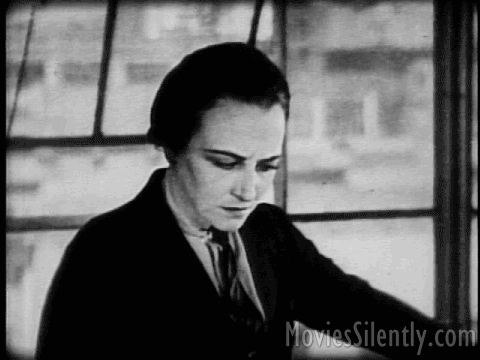
Acting! Acting! Which actress could lay claim to the acting prize?
- Edith Storey
- Louise Glaum
- Flora Finch
- Mary Pickford
- Pauline Frederick
Now here are three names we didn’t see in the other categories. Edith Storey retired from films in 1921 and good for her! Louise Glaum was the regular vamp of William S. Hart’s westerns (she was in Hell’s Hinges) and she also did some solo vamping before the fad ended. Flora Finch had been paired with John Bunny as a comedy duo but continued to be in demand as a character actress after his death.
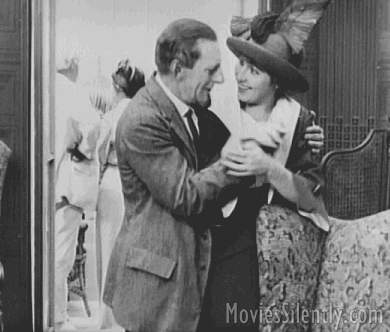


The Gents
Who’s the most gorgeous guy in the movies? The top five handsomest dudes, according to the poll:
- Harold Lockwood
- Ralph Kellard
- Wallace Reid
- Francis X. Bushman
- Earle Williams
Three of the five handsomest men weren’t in the top ten in the popularity poll. Hmm, interesting. You can see Reid and Bushman in GIFs above but here are the top two gorgeous gents:


The only GIF I have of Male Beauty #5 Earle Williams is from 1926, a decade past his peak.
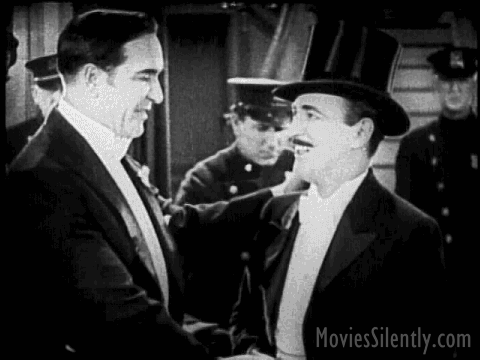
Ralph Kellard is sometimes erroneously listed one of the film stars who was pushed out by sound. In fact, Kellard’s output became sporadic in the 1920s (he made no films at all in 1922 and 1923 and only two in 1924) as he split time between stage and screen. After 1924, he only made one more picture (in 1930) and then retired from movies. Poor Harold Lockwood died in 1918, a victim of the influenza epidemic. Earle Williams worked steadily until 1927, when he passed away due to pneumonia. (Anyone who wants to go back to the “good old days” is nuts.)
By the way, my personal picks for handsomest leading men in the movies circa 1917 are Sessue Hayakawa, Noble Johnson and Ivan Mosjoukine (of course).
Who’s the actor who could charm everybody’s socks off? The top five charismatic gents:
- Francis X. Bushman
- Wallace Reid
- Earle Williams
- Harold Lockwood
- J. Warren Kerrigan
No surprises here. Everyone was completely charmed by Bushman and Kerrigan, which makes their respective falls from grace more understandable. Kerrigan was guilty of saying something completely charmless and Bushman… Well, we discussed that already.
Okay, we have looks and charm but who could ACT? The top five best actors, according to the polls:
- William S. Hart
- Theodore Roberts
- Harry Northrup
- Francis X. Bushman
- Henry B. Walthall

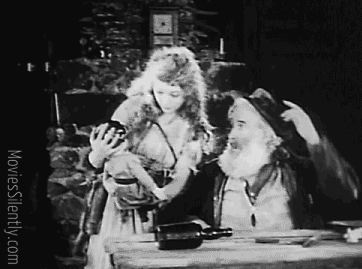
Now we’re cooking with gas! William S. Hart had just released his masterpiece, Hell’s Hinges, so his position is no surprise. I am glad to see venerable ham Theodore Roberts on the list (I loved him in Miss Lulu Bett, Forbidden Fruit and other assorted DeMille brothers offerings). Harry Northrup is not quite as well known but he had supporting roles in films like The Four Horsemen of the Apocalypse and A Woman of Paris. Walthall and Bushman were two slices of ham and we’ve already covered them so let’s move on!
The Great J. Warren Kerrigan Gaff
A fixture of these popularity contests for years, 1917 was the last time J. Warren Kerrigan would earn a place in the top 10. The story is a bizarre one. In May of 1917, a few months after the popularity contest wrapped, Kerrigan was winding down a publicity tour. The United States had just entered the First World War and a reporter in Denver asked the actor if he was going to fight. Kerrigan’s answer:
I am not going to war. I will go, of course, if my country needs me, but I think that first they should take the great mass of men who aren’t good for anything else, or are only good for the lower grades of work. Actors, musicians, great writers, artists of every kind—isn’t it a pity when people are sacrificed who are capable of such things—of adding to the beauty of the world.
Oh. My. Gravy.
Someone in the Kerrigan camp has been hard at work trying to rehabilitate his image and assorted alternate theories have been put forward to explain his drop in popularity but let’s be frank: Kerrigan’s remarks were despicable and any star who made them today would face a similar backlash. Whether he meant what he said or it was just a slip of the tongue after an exhausting publicity tour, he well and truly inserted his foot into his mouth and was called out. He later claimed he was misquoted (the “I was hacked” of the 1910s) but reactions from fan magazines show that considerable damage was done.
Kerrigan’s alleged remarks coincided with his leaving Universal over salary demands (at least that’s what the fan magazines claim, take it as you will) and signing on with a series of off-brand concerns, as well as making pictures under his own banner. Reading some of the plots of these pictures, it’s no wonder his career was unable to recover. Corn right off the cob! I was groaning at a one paragraph plot summary, I can’t imagine how painful it must have been to actually watch one of these pictures. (Not much danger of that, it seems that many of them are lost.)
Not in the Top 10
Every year, there seem to be more questions about who is left out of the top ten than who is included. So let’s have some fun and discuss the assorted reasons why today’s big silent stars are nowhere to be found. Here are some answers to burning questions:
Where’s Charlie Chaplin? Where’s Buster Keaton?
While silent comedy has eclipsed drama in modern times, comedians did not seem to fare well in popularity contests of the day. Chaplin made the list but nowhere near the top ten, ditto Mabel Normand. Harold Lloyd is nowhere to be found and the contest wrapped months before Buster Keaton’s film debut was released. Sorry, comedy fans, but this popularity contest is not kind of funnymen. It has, however, been kind to Flora Finch and I am totally good with that.
You know what, though? I am smirking a little. Everything about silent films today is so comedy-centric that it’s nice to have something revolve around drama for a change. Neener neener neener.
What about the Griffith Girls?
Out of all the stars of D.W. Griffith’s films, only Henry B. Walthall seemed to reap the rewards of personal popularity, at least as far as placing in this contest goes. The highest scoring Griffith leading lady is Blanche Sweet at #21 and you will recall that she left him for Lasky and had been there since the start of 1915. (Ditto for Wallace Reid. And if you insist on counting Mary Pickford as a Griffith girl, remember that she had been in his troupe since 1912.) Indeed, Walthall had also departed for greener studio pastures soon after the release of The Birth of a Nation.
Recall as well that D.W. Griffith considered himself the main draw of his pictures, not the performers. It is possible that his stable of actors did not get the same boost with the contest that major studio players would have enjoyed. That or the general public was really not charmed by Griffith’s bizarre insistence that his adult leading ladies smooch birds, giggle wildly and skip and twirl like six-year-old kids playing ballet.
Where’s Douglas Fairbanks?
Remember, pop culture moved at a much slower pace and the polls for the popularity contest closed in EARLY 1917. Fairbanks made his film debut in late 1915 and released a slew of charming adventure comedies throughout 1916 but they weren’t quite enough to win over this set of voters. Fairbanks cracked the top fifty and I am sure he would have placed higher if the contest had gone on a bit longer. As for the Looks/Charisma/Acting poll (which, you will recall, ran later in 1917), dearest Doug cracked the top ten in looks and charisma and the top fifteen for acting ability. Quite respectable. (Not to give anything away but keep your eyes peeled for next year’s list. I think Fairbanks fans will be well pleased.)
All done!
Phew! That’s all for the stars of 1917. I hope you enjoyed the whirlwind tour of the popular players of the era. Here’s hoping more and more of their work will become available to the general public.
***
Like what you’re reading? Please consider sponsoring me on Patreon. All patrons will get early previews of upcoming features, exclusive polls and other goodies.




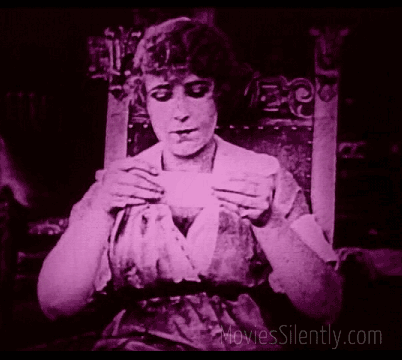


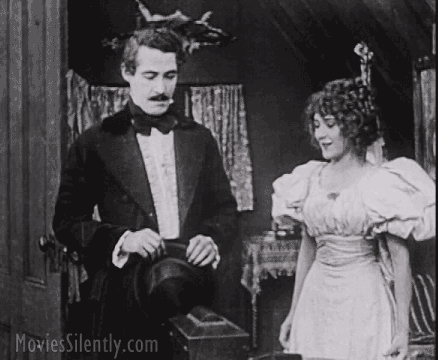


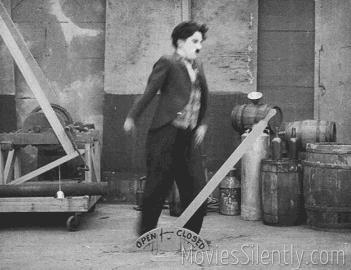
These are some wonderful .gifs! Thank you! Particularly love that you always clip ones showing Pickford’s great gift for small telling gestures, never lost on an audience then or now.
William S. Hart is #1 in the Best Actors category, and I am so good with that 😉
As for none of our favorite, uber-talented, lovely (and handsome) silent clowns making the 1917 Top Ten cut, I can’t help but be reminded of a remark Momma Peg Talmadge supposedly made to Buster Keaton about allowing Keaton to marry her daughter Natalie. Peg had told him that she would never let any of her girls marry actors, but Keaton was fine because, “you’re not an actor, you’re a comedian.”
So glad you enjoyed it! Great anecdote. Yes, it’s important to remember that while silent comedy gets all the kudos now, it wasn’t necessarily so back when the films were new.
One result of the emphasis on drama is that I’m much more familiar with the women than the men on these lists. Well, in the case of Kerrigan, I guess it’s kind of a given. But even Theda Bara, most of whose work is lost, better known to me.
Yes, I think most of the leading men slots are taken up by comedians, leaving very little room for anyone else. I mean, I had to really look to find anything with Edward Earle, Harold Lockwood, Earle Williams, Ralph Kellard, etc.
This is cool because I would think Douglas Fairbanks would be here this time. Harold Lockwood…reminds me Of Lockwood and Lamont from Singing in the Rain….I wonder if they took his last name for the character gene Kelly plays. Yup, that horrible statement is a huge nail in the coffin…what an idiot!
Yes, it seemed to take a bit longer for some stars to win hearts. Mary Pickford hovered under the top ten for years before stealing the top spot. Yeah with Kerrigan, it’s not often that someone manages to tick off EVERYONE: hawks, doves, the entire middle and working class…
Ouch, that Kerrigan comment! A genuine quote or a misquote, it’s a career-ender either way.
I wish more of Theda’s films survived.
Yes, I can’t imagine any star of the 1910s or 2010s surviving something like that. And he made the remark to a local newspaper not beholden to the film studios, which meant it went to print immediately. Bad move all around.
My grandmother, who was crazy about Francis X. Bushman, was born in 1902. So this timing makes sense: he was an the height of his popularity and she was a star-struck 15-year-old. Despite his flaws, I remain #TeamFrancisX for Grandma’s sake.
Do you have recommendations for Mary Miles Minter films? I’ve read so much about her related to the Taylor murder, but I’ve never seen any of her films. And do you think she was involved in the murder?
Yes, Francis was just perfect for the moviegoing public of the day: brawny, a Grecian profile and oodles of screen charm. It’s no surprise that so many of his tween and teen fans remember him years later.
For Mary Miles Minter (3M for short) you might like The Eyes of Julia Deep. None of her extant films are masterpieces (alas, her Anne of Green Gables is lost) but it’s a nice little programmer. Regarding Taylor: no, I don’t think she was involved but I would hardly call myself an expert.